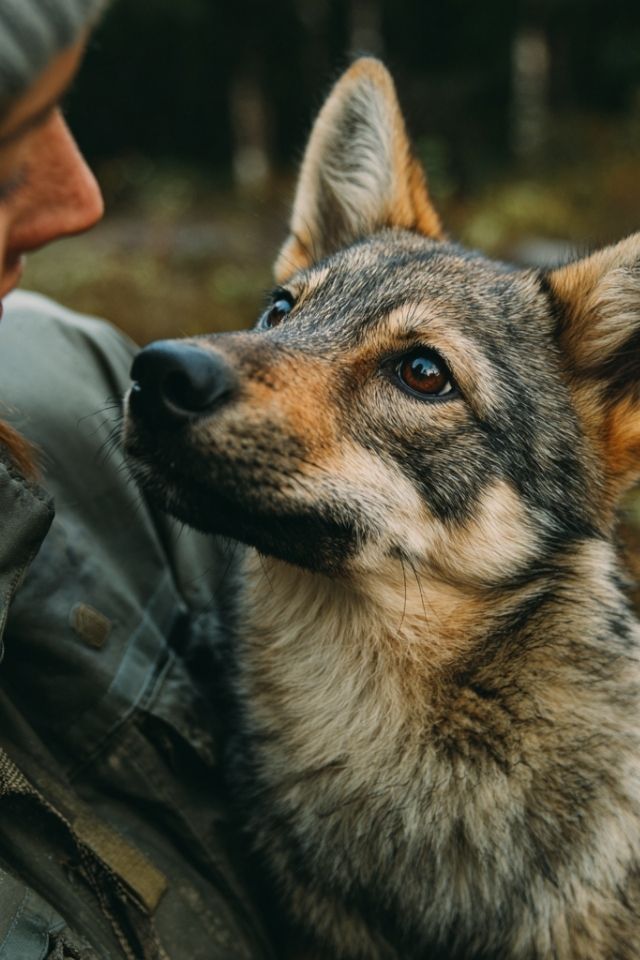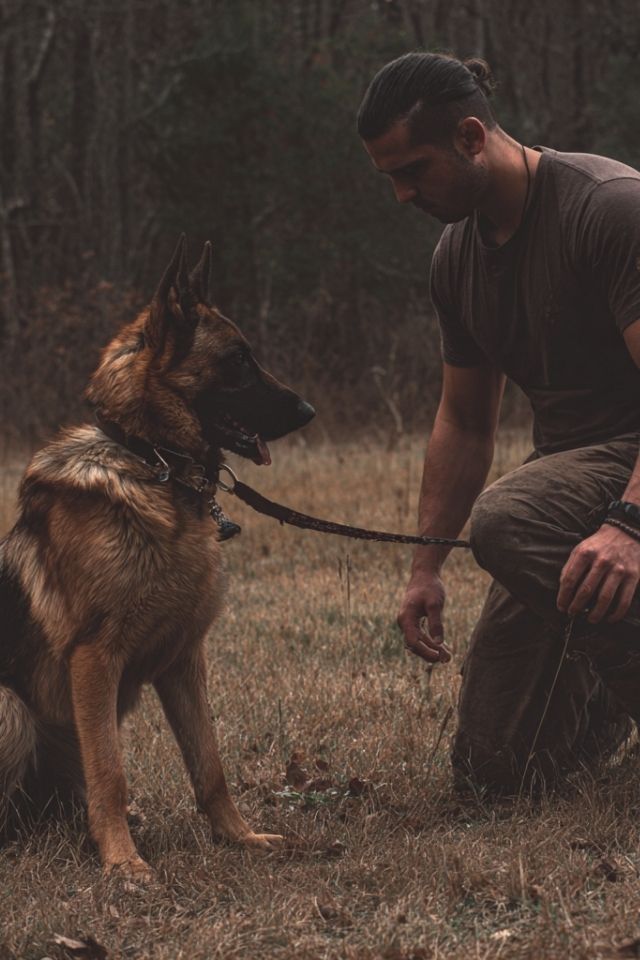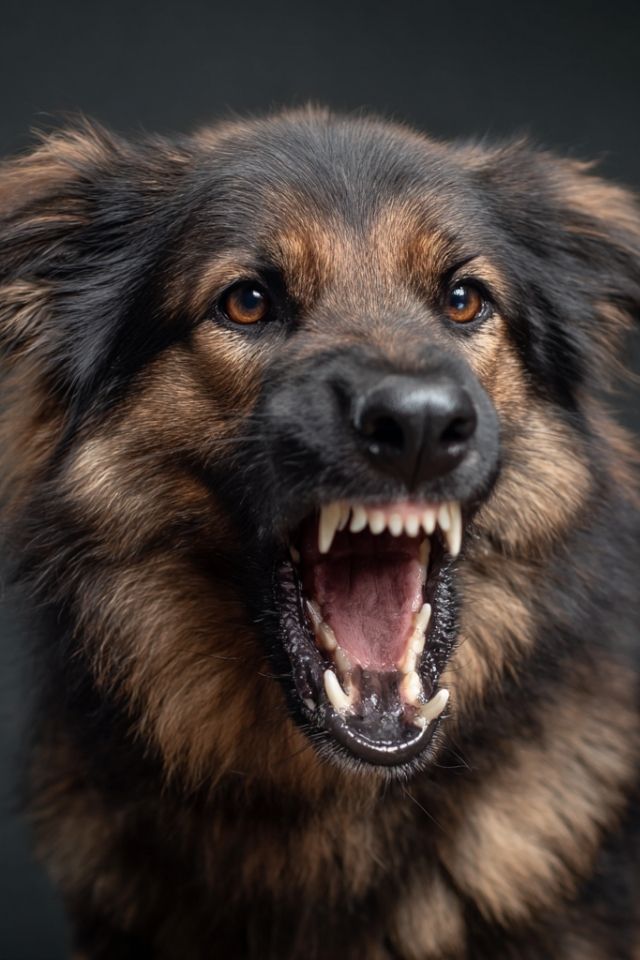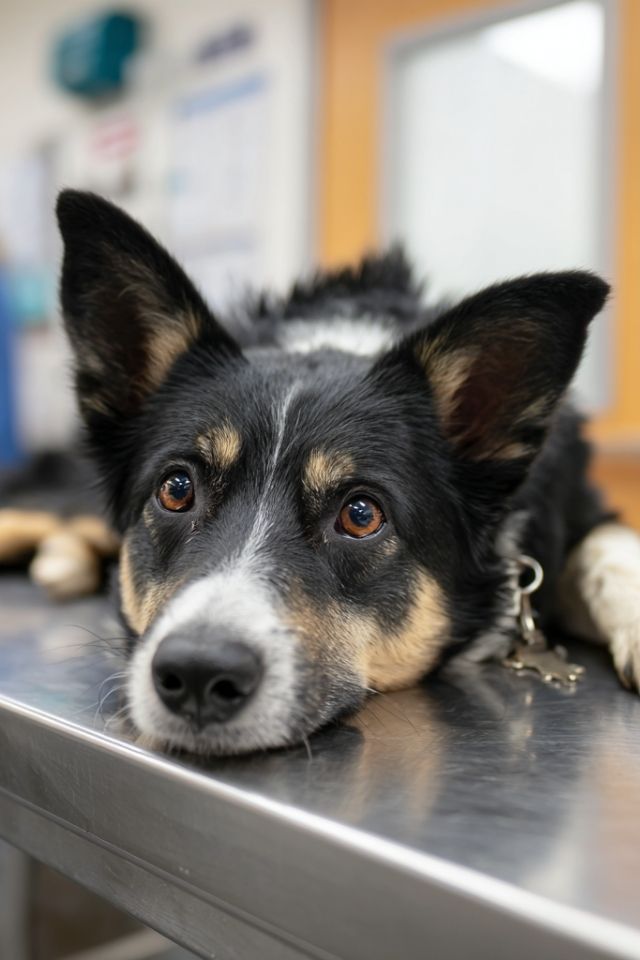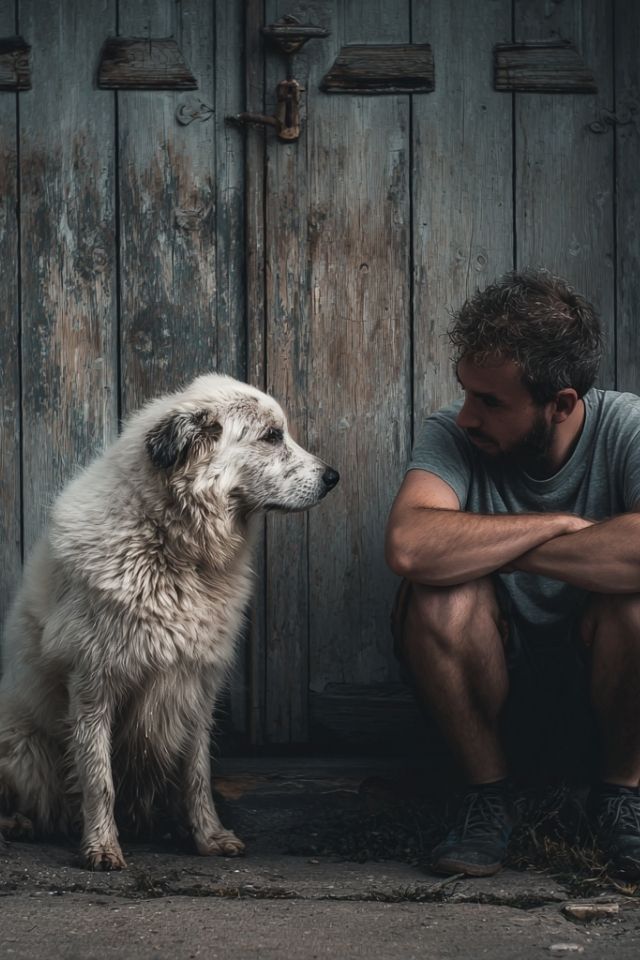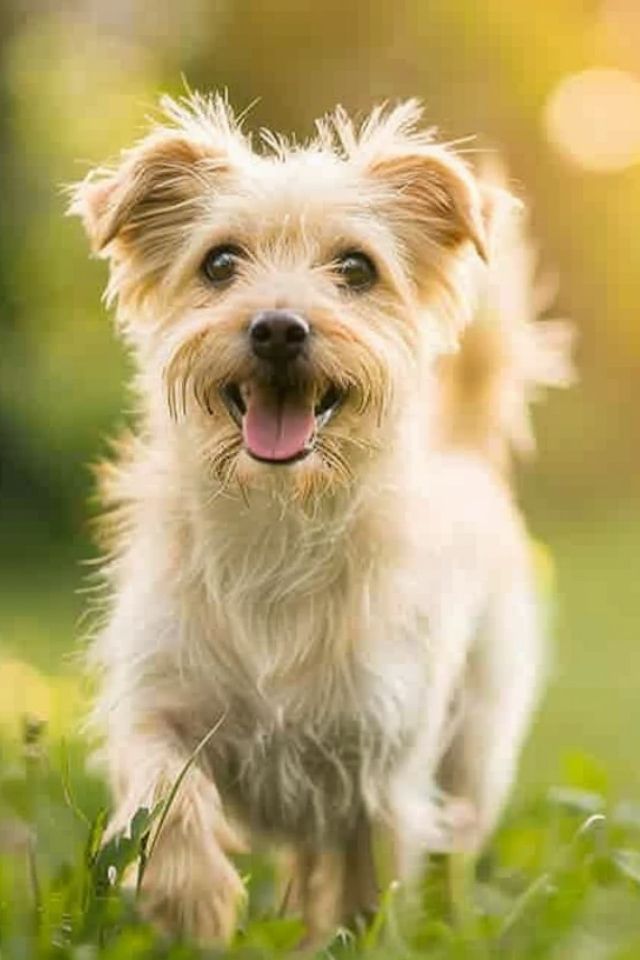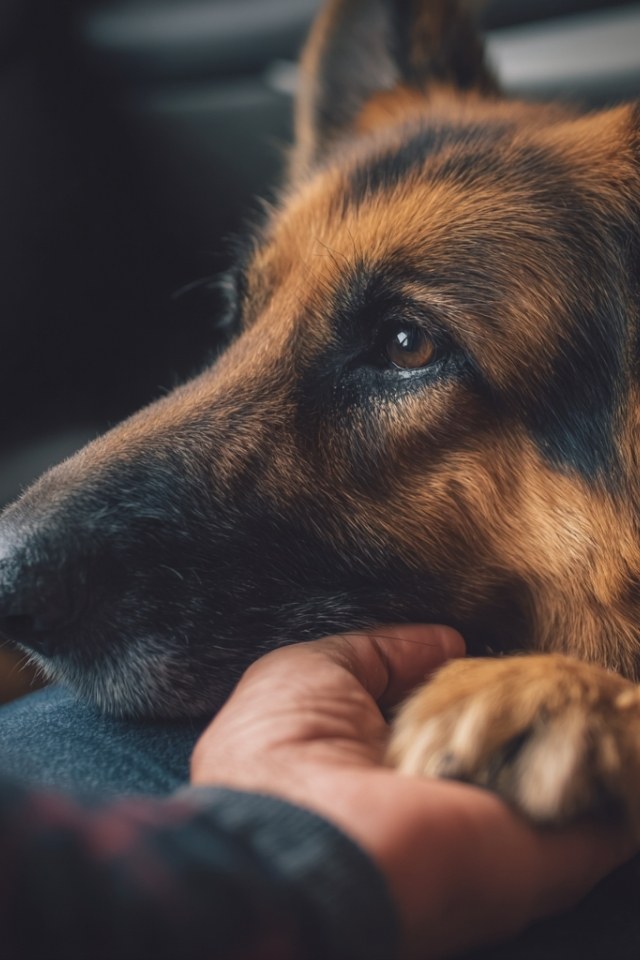The Moment Everything Changed
There’s a moment every dog owner knows—the one where you call your dog’s name and see the flicker of decision cross their eyes. Will they come, or won’t they? In that split second, most of us tighten. We repeat the command, our voice edged with tension. We’ve been taught that control lives in our certainty, our dominance, our unwavering expectation of obedience.
But what if that moment—that fraction of hesitation we’ve learned to fear—is actually an invitation? What if your dog isn’t resisting but thinking, not defying but deciding?
I watched this unfold with a rescue named Atlas, a shepherd mix whose eyes held the weight of too many commands and too few choices. His handler, Maria, stood at one end of the training field, Atlas at the other. “Come,” she said, her body rigid with expectation. Atlas looked at her, then away, then back. The old interpretation would call this disobedience. But something else was happening.
In that pause, Atlas was doing what his previous life had never allowed—he was considering. He was feeling into whether this moment was safe enough for vulnerability, whether coming meant losing himself or finding connection. Through the NeuroBond lens, we understand this: trust doesn’t live in instant compliance. It lives in the space where your dog’s internal world meets your invitation, where their autonomy and your guidance create something neither could build alone.
This is where our journey begins—in understanding that the most profound obedience isn’t taught through commands. It’s cultivated through choice. 🧡
The Science Woven Into Relationship
What Your Dog’s Brain Knows That We’ve Forgotten
Picture your dog’s mind not as a machine waiting for programming, but as a garden—complex, sensitive, responsive to the conditions you create. Neuroscience reveals something beautiful: when dogs experience perceived control, when they sense their actions genuinely influence outcomes, their entire internal landscape shifts.
The prefrontal cortex—that region responsible for thoughtful decision-making and impulse control—lights up differently when your dog chooses rather than obeys. Dopamine pathways strengthen, not from external treats alone, but from the intrinsic reward of successful navigation. The amygdala, that ancient fear center, softens its hypervigilance.
But here’s what happens when choice is absent: learned helplessness takes root like frost. The same neural pathways that could support flexibility and resilience instead become highways of shutdown. Your dog learns that nothing they do matters, that the world acts upon them rather than with them. That bright curiosity you loved when they were young? It fades, not because your dog has grown older, but because they’ve learned that their inner voice has no place in this relationship.
I think of a young border collie named Echo, whose brilliance had become a burden. She’d been trained to perfection—every command executed flawlessly, every movement precise. Yet something essential had dimmed. Her handler came to me confused: “She does everything I ask, but she seems… empty.”
The issue wasn’t training. It was the absence of self. Echo had learned to be an extension of human will, forgetting entirely that she possessed one of her own.
The Emotional Architecture of Learning
Your dog doesn’t learn behaviors in isolation from emotion. They learn behaviors wrapped in emotional context—fear or curiosity, pressure or play, helplessness or agency. This is why two dogs can receive identical training yet develop entirely different relationships with learning.
Emotional self-regulation isn’t something you can command into existence. It’s cultivated through practice, through repeated experiences of “I felt overwhelmed, I made a choice that helped me manage that feeling, and the choice worked.” When your dog chooses to sit calmly near a distraction rather than being commanded into stillness, something profound happens beneath the visible behavior. They’re not just sitting—they’re learning that their internal state is something they can navigate, that arousal and anxiety aren’t forces that simply happen to them.
Consider the difference: A dog commanded to stay while every fiber of their being wants to investigate a new smell is practicing suppression. A dog who chooses to check in with you before investigating is practicing self-regulation. One builds tension over time; the other builds capacity.
The Invisible Leash exists not in the physical world but in this understanding—that real guidance happens through awareness rather than restriction, through your dog’s internal choice rather than external control. When you learn to recognize this, you stop pulling. You start inviting. 🧠
The Body Tells What Words Cannot
Reading the Language of Hormones and Heart
Maria didn’t need a laboratory to tell her that Atlas was stressed. She could see it in the whites of his eyes, the stiffness in his shoulders, the way he panted even in cool weather. But when we measured his cortisol levels after weeks of command-based training, the numbers told a story his behavior had been whispering all along: chronic, unrelenting pressure.
Cortisol—that hormone released under stress—should rise and fall like waves. Challenge comes, cortisol rises, challenge passes, cortisol drops. This is healthy adaptation. But Atlas’s cortisol barely dropped anymore. His nervous system had learned that relief never truly came, that every moment might bring another demand, another test of compliance he couldn’t fail.
Then something shifted. We began integrating choice points into Atlas’s daily life. Small things: which path to take on walks, which toy to play with, when to take breaks during training. Within weeks, his cortisol patterns changed. The baseline dropped. Recovery after challenges quickened. His breathing deepened.
But the real transformation showed in oxytocin—that hormone of bonding and trust. Studies reveal that dogs release oxytocin during eye contact with their humans, particularly when that connection feels mutual rather than coerced. As Atlas learned that his choices mattered, that Maria was listening to him as much as he listened to her, those moments of eye contact multiplied. Not because Maria commanded them, but because Atlas sought them.
This is Soul Recall in its purest form—when your dog returns to you not from training but from memory, not from fear of consequence but from emotional recognition that you represent safety, choice, and connection. Those neural pathways, once carved by pressure, were being rewritten by partnership.
Heart rate variability told the rest. This subtle measure—the variation between heartbeats—reveals nervous system flexibility. Low variability signals a system stuck in stress mode, unable to shift between arousal and calm. High variability indicates resilience, adaptability, the capacity to meet challenges without becoming locked in defense.
Atlas’s HRV climbed steadily. His autonomic nervous system was remembering something it had forgotten: that safety and engagement could coexist, that learning didn’t require chronic vigilance.
Creating the Space for Choice
The Architecture of Meaningful Decisions
Not every choice carries equal weight. Offering your dog the “choice” between a bitter pill and nothing isn’t meaningful autonomy—it’s just repackaged coercion. True choice points honor your dog’s preferences within boundaries that serve both their wellbeing and your shared life together.
I remember working with a reactive terrier named Finn, whose world had become a minefield of triggers. His owner, David, had developed elaborate avoidance strategies—crossing streets, changing walking times, retreating from any potential challenge. Finn was “safe,” but he was also shrinking.
We started with directional choices during walks. At intersections where both paths were genuinely acceptable, David would pause, indicate both options with gentle gestures, and wait. The first few times, Finn froze—the concept of his preference mattering was so foreign it created momentary paralysis. But David waited, breath steady, expectation soft.
When Finn finally took a tentative step toward the right path, something shifted in his body language. His tail, typically carried low, lifted slightly. David followed Finn’s choice enthusiastically, and in that moment, a new conversation began.
Over weeks, we wove choice points throughout Finn’s day:
Pacing choices during training—allowing Finn to determine how quickly he performed known behaviors, releasing the performance anxiety that had made even simple sits feel like tests.
Engagement choices with distractions—instead of demanding Finn ignore every bicycle or jogger, David offered: “Check in with me, or take a moment to observe, your choice.” Paradoxically, as Finn learned he could choose to watch, his reactivity diminished. The trigger lost its power because it no longer represented a threat to his autonomy.
The choice to disengage—perhaps most revolutionary, Finn learned he could choose to move away from overwhelming situations. This wasn’t retreat training; it was agency training. And it transformed his confidence because he learned that discomfort didn’t mean helplessness.
The old training paradigm would call this “letting the dog run the show.” But watch closely and you see something else: Finn was learning to navigate his own nervous system, to make decisions that served his wellbeing within the structure David provided. The Invisible Leash was forming—not made of tension but of mutual awareness, not restraining Finn but guiding him toward his own capacity for self-regulation.
The Human Half of the Equation
Your Emotional State Is the Training Environment
David struggled at first, not because the concept was difficult but because his own nervous system had been trained into rigidity. Every time Finn hesitated, David’s breath caught. Every moment of Finn’s decision-making felt like loss of control, and David’s body telegraphed that anxiety straight into Finn’s already sensitized system.
This is the truth that traditional training often misses: your dog reads your emotional state far more accurately than your commands. When you’re tense, your dog learns that the situation is dangerous. When you’re frustrated, your dog learns that their presence creates problems. When you’re anxiously awaiting their choice, your dog learns that choice itself is threatening.
Research on the human-dog bond shows that human emotional regulation can reduce canine cortisol during stress—but only when that regulation is genuine, not performed. Dogs see through our masks.
David had to learn something harder than any training technique: how to remain emotionally neutral while his dog made choices he wasn’t sure about. How to breathe steadily when Finn chose “wrong.” How to maintain soft eyes and open posture even when anxiety whispered that everything was falling apart.
We practiced this together. I’d create scenarios where Finn would likely choose the less convenient option, and David’s job was simply to notice his body’s impulse to control, to tighten, to intervene—and then consciously release it. Breath by breath, David learned that true control doesn’t come from managing every moment but from creating a stable emotional field within which Finn could safely explore his own decision-making capacity.
The timing shifted too. Initially, David marked Finn’s choices the instant they happened, interrupting Finn’s processing with premature reward. We slowed down. We created space for Finn’s prefrontal cortex—that thoughtful, decision-making part of his brain—to engage fully before the reward arrived. This taught Finn something crucial: the thinking itself was valued, not just the outcome.
Trust Built in Small Moments
Trust, we discovered, isn’t built in dramatic breakthroughs. It’s built in the accumulation of small moments where your dog’s choice is honored, where their autonomy within safe boundaries is respected, where their internal experience is acknowledged as valid.
Watch how trust changes eye contact. At first, Finn’s glances toward David were checking—am I in trouble, am I doing this right, what do you want from me? These were glances of a subordinate seeking approval or avoiding correction.
But as choice-based interactions accumulated, something beautiful emerged. Finn began seeking eye contact not to check but to connect, not from insecurity but from genuine interest in David’s internal state. This is the NeuroBond forming in real-time—that regulatory loop where human control and canine autonomy aren’t opposing forces but complementary rhythms, creating together something neither could create alone.
Finn’s proximity changed too. Previously, he orbited David at exactly leash-length—close enough to avoid punishment, far enough to maintain some autonomy. As trust deepened, that distance became elastic, fluid. Finn would venture further, confident in his ability to return. He’d come closer, not because commanded but because David’s presence had become something Finn actively sought rather than anxiously monitored.
This is what the shift from obedience to cooperation looks like in real life. Not flashy. Not dramatic. Just a dog who increasingly chooses the partnership because the partnership honors who he is. 🧡
When Trauma Asks for Patience
Rewriting the Story of Safety
Some dogs come to us with histories that make choice feel dangerous. Atlas was one of these—a dog whose early life had taught him that expressing preference led to punishment, that visible desire made you vulnerable, that safety lived only in invisible compliance.
For dogs like Atlas, traditional training can feel like re-traumatization. Every command is a reminder that their will doesn’t matter. Every correction reinforces that the world acts upon them with force. Every demanded behavior proves again what they learned long ago: helplessness is the price of survival.
Choice-based training, when done with trauma-informed awareness, becomes something else entirely—a slow, patient rewriting of that fundamental story. We’re not just teaching behaviors. We’re teaching that the world can be predictable without being controlling, that structure can exist without suffocation, that relationship can include both guidance and agency.
Maria started with the smallest possible choices in the lowest-stress environment: her living room, just her and Atlas, choosing between two identical treats. Even this simple binary choice caused Atlas visible stress initially. The concept that his preference mattered was so foreign it created cognitive dissonance.
But Maria waited. She offered the choice without pressure, without urgency, without need for Atlas to “get it right.” And slowly, over days and weeks, Atlas began to understand that this was real—his choice created outcomes, his internal experience could be expressed safely, his autonomy within boundaries was not just tolerated but welcomed.
The therapeutic power of this approach lies in its direct address to trauma’s core wound: the belief that you have no influence over your experience. Each successful choice Atlas made countered that belief. Each time Maria honored his decision—even when it wasn’t the one she might have chosen—the message deepened: you matter, your internal world matters, your voice in this relationship matters.
Atlas’s nervous system began shifting from chronic defensiveness to cautious engagement. His reactivity—that hair-trigger response to anything unexpected—softened not because we trained it away but because the underlying perception of helplessness was healing. When you believe you have options, triggers become challenges to navigate rather than threats to survive.
The Practice: Where Philosophy Meets the Walking Path
Beginning the Conversation
Start here, in this moment, with something small: At the next intersection on your walk, pause. Take a breath. Indicate two paths to your dog—not with commands but with gentle gestures, an invitation rather than a demand. Then wait.
Your dog might look confused. They might not move. They might look back at you repeatedly, checking for the “right” answer. This confusion is information—it tells you how rarely they’ve been asked their preference, how deeply they’ve learned that their role is to follow rather than choose.
Stay soft. Keep breathing. When your dog finally indicates a direction—even if it’s just a small lean, a slight head turn—honor it completely. Take that path as if it were your plan all along. Celebrate quietly. What you’re teaching in this moment isn’t about paths at all. You’re teaching that their internal experience can be safely expressed and respectfully heard.
Build from here. Offer toy choices before play. Present engagement options after training success. Create pacing freedom in known behaviors. Each choice point is a repetition in the language of partnership, a practice round in the skill of cooperative decision-making.
When It Feels Like You’re Losing Ground
There will be moments—many moments—when this approach feels like you’re giving up control, when the old training voice in your head insists you should be commanding, correcting, dominating. David felt this acutely when Finn chose to pause and watch a bicycle rather than immediately checking in.
But control is an illusion we’ve collectively believed. Real reliability comes not from your ability to suppress your dog’s will but from your dog’s genuine motivation to cooperate. The most “obedient” dogs under command-based systems often show the least reliability in genuine emergencies, when stress overrides conditioning. The dogs trained through choice—through understanding and cooperation—show resilience precisely because their behavior comes from internal motivation rather than external pressure.
When doubt rises, return to what you can observe: Is your dog more engaged or less? Is their stress reducing or increasing? Are they seeking connection with you or avoiding it? The answers to these questions matter more than whether they respond within two seconds or five.
The Destination That Becomes a Journey
We end where we began—in that moment of decision, that space between call and response where everything meaningful lives. But you see it differently now. What once looked like hesitation now reveals itself as thought. What once felt like disobedience now shows itself as autonomy. What once seemed like chaos now appears as the natural flow of two beings learning to move together rather than one dominating the other.
Atlas comes reliably to Maria now, but the quality of that recall has transformed. He comes not from trained compliance but from emotional choice, not from fear of consequence but from genuine desire for connection. In moments of Soul Recall, when Maria’s voice carries through distance or distraction, Atlas’s response comes from somewhere deeper than obedience—it comes from the memory of all the times his choice was honored, his voice was heard, his partnership was valued.
This is the essence of Zoeta Dogsoul—the recognition that the deepest training happens not in commands but in relationship, not in dominance but in mutual respect, not in control but in the sacred space where your awareness and your dog’s autonomy create something neither could create alone. The Invisible Leash forms not from tension but from trust, not from restraint but from recognition that true guidance happens when both beings in the relationship feel seen, heard, and honored.
Your dog is not a machine to be programmed or a problem to be solved. They are a being with an internal world as rich and real as your own, capable of thought and choice and growth. When you train through choice, you’re not just teaching behaviors—you’re building a relationship where cooperation emerges naturally because both partners experience the relationship as worth choosing, moment by moment, day by day.
The path forward is yours to walk together. The destination isn’t perfect obedience—it’s genuine partnership. And it begins with a single choice: Will you invite your dog into this conversation, or will you continue to speak in monologue?
The answer, of course, is yours to choose. And in that choice lies everything. 🧡
